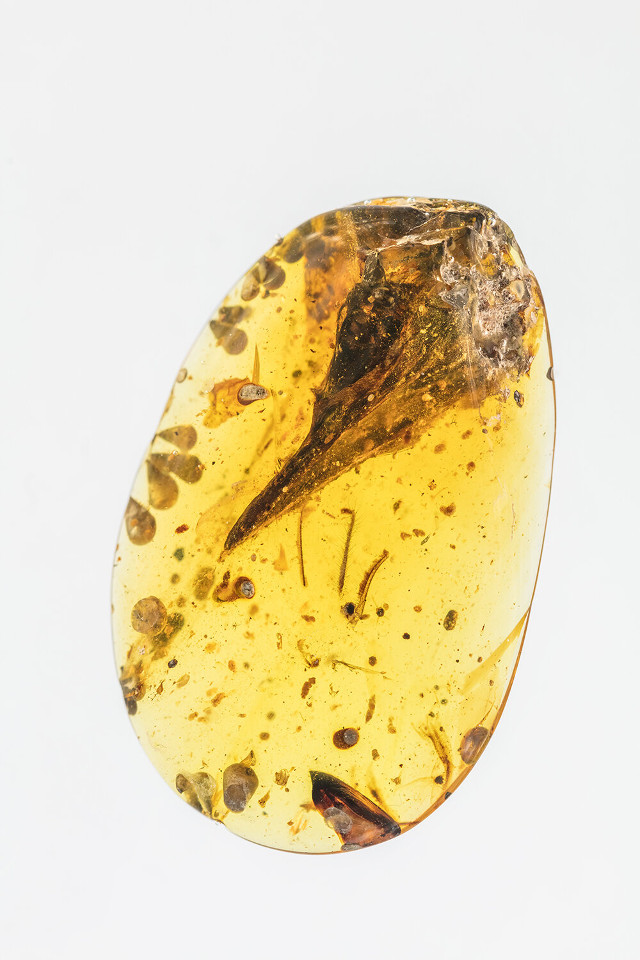
An article published in the journal “Nature” reports the identification of a small bird-like dinosaur from the examination of a skull preserved in a piece of amber dating back to about 99 million years ago, in the Cretaceous period, found in Myanmar. A team of researchers named it Oculudentavis khaungraae and it could be the smallest dinosaur ever, with a size comparable to a hummingbird’s. However, the identification is disputed even if, at least for now, counterarguments have only been published in an article of the Chinese Institute of Vertebrate Paleontology and Paleoanthropology (IVPP).
Several very well preserved fossils of small animals have been discovered in pieces of amber and in various cases come from today’s Myanmar, a place where in the Cretaceous there was a rain forest with trees that secrete resin that could become amber, in many cases after imprisoning some animals. In some cases fossils are small fragments of larger animals, in this case the animal was small but only its skull remained preserved in amber. The top image (Courtesy Xing Lida. All rights reserved) shows the amber piece containing the fossil, which was cataloged as HPG-15-3.
The skull subject of this research was found by Lars Schmitz, associate professor of biology at W.M. Kare Science Department of the Claremont McKenna, Scripps and Pitzer Colleges, at the Hupoge Amber Museum, to which it was donated, during a search for fossils in northern Myanmar conducted with his team. There are few cases in which vertebrate fossils are preserved in amber and in this case the skull is really small with its 14 millimeters in length. The researchers subjected it to a tomographic examination similar to the high resolution CT to be able to create a 3D reconstruction.
The characteristics of what was named Oculudentavis khaungraae were analyzed and the researchers saw similarities with birds, dinosaurs, and even lizards. According to them, it’s a tiny dinosaur, perhaps the smallest ever, similar to a bird and related to the famous Archeopteryx. The skull appears to belong to an adult or near-adult specimen and its very small size would indicate that that type of evolution from much larger species had already begun in feathered dinosaurs, well before the ancestors of today’s hummingbirds.
However, after the publication of the article, skeptical comments about the nature of Oculudentavis khaungraae began. According to some paleontologists, its characteristics are closer to those of some lizards and some other reptiles now extinct with bird-like skulls. Some arguments have been published on the Chinese Institute of Vertebrate Paleontology and Paleoanthropology (IVPP) website. The article is in Chinese, and the need for many people to use a translator to read it makes the evaluation of its contents more difficult.
As often happens in the field of paleontology, a study on a species is based on a small part of a single specimen. If they had available a complete or almost complete skeleton of Oculudentavis khaungraae it would be at least possible to understand if it belongs to the Avialae clade, which includes birds and bird-like dinosaurs, even if the precise definition is the subject of discussion. A wingless skeleton would indicate that it could be a reptile. In the meantime, discussions about this skull will certainly continue.


